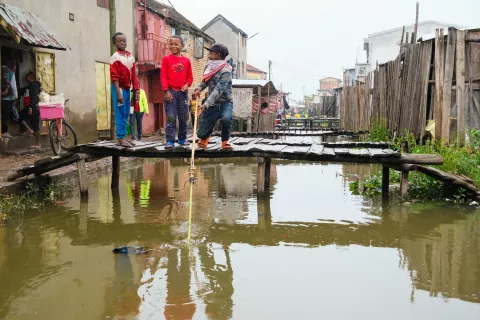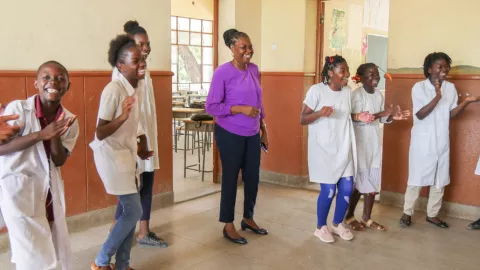Prospects for Children in 2021–2025: A Global Outlook
At a time of global crisis and rising uncertainty, does the vision of the SDGs remain a possibility?

Highlights
The next five years will be critical for children.
Each passing year brings us closer to 2030, the year for which the world has set ambitious goals for itself – including for children – in the shape of the Sustainable Development Goals (SDGs).
Progress in the next five years will decide if the vision of the Goals remains a possibility.
Our analysis looks at the prospects for the world’s children based on a review of the evolving context, and it does so at a time of global crisis and rising uncertainty. COVID-19, climate change, the unwinding of democratic expansion, a shaken spirit of multilateralism – all are having a profound and lasting impact on children.
This state of the world today threatens to overshadow two decades of historic progress that has shaped the lives of children for the better. This progress has been driven by a convergence in living standards – as poor countries start to catch up with wealthier counterparts – and an overall improvement in the lives of children thanks to new technologies, new knowledge and new norms – from the proliferation of antimalarial bednets to demands for gender equality in access to education.
Whether these forces persist or whether they reverse in the coming years will be critical when we come to look back and assess the progress made for children at this vexed and complex moment in our history.
Key findings include:
- The likelihood of a two-tier recovery from the pandemic, with rich countries exiting first, creating conditions for an historic disinvestment in children in many developing countries that would put the SDGs for children out of reach.
- On the flipside, the possibility of an acceleration in technological advances that benefit children, inspired by the rapid development of COVID vaccines, and advanced further by an emboldened role for the state in funding research and development.
- Weakened multilateralism risks stifling progress on the world’s greatest collective action problems, including many of the biggest threats to children’s lives.
- The effects of climate change on children’s health, development and well-being will become increasingly apparent. Meanwhile, the role of young people as a formidable force in driving change in attitudes, behaviours and policy concerning climate is likely to grow and become increasingly sophisticated.
- A deepening digital divide risks leaving children in the Global South furthest behind in terms of their ability to benefit from digital tools, and most exposed to deficiencies in digital governance.
- A trend towards youth activism is to continue as young people opt out of traditional forms of political participation, distrust electoral processes and express dissatisfaction with democracy.





